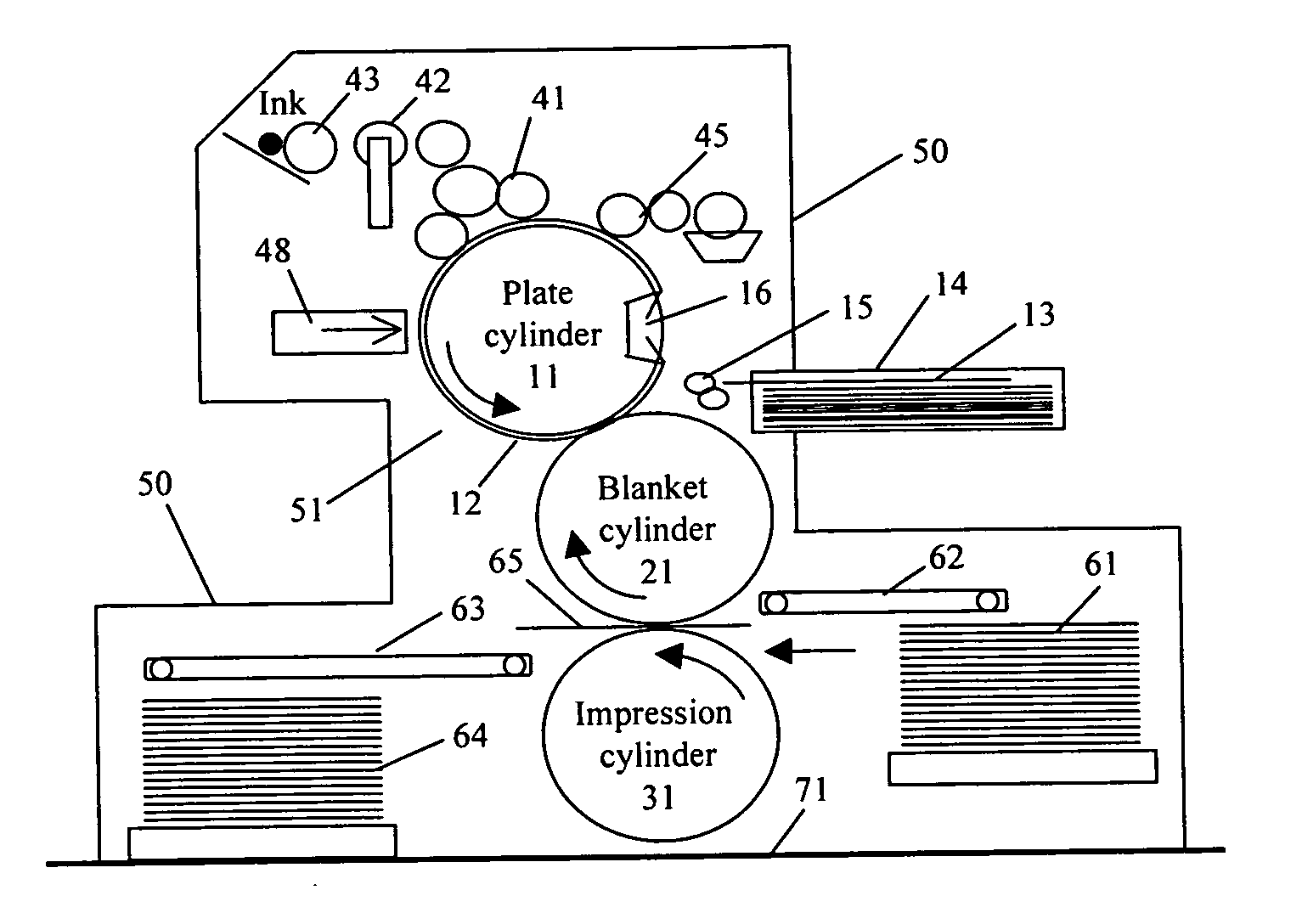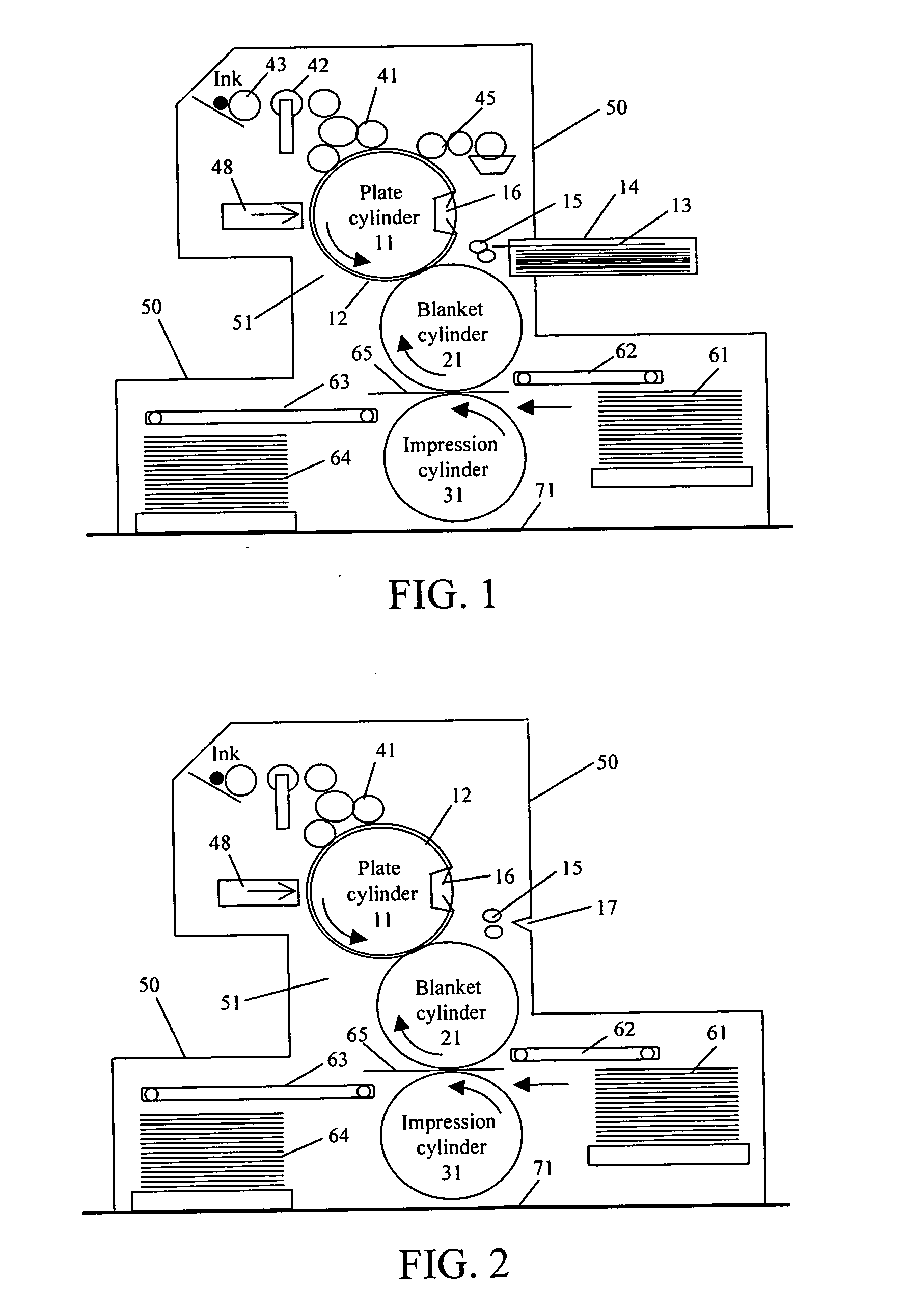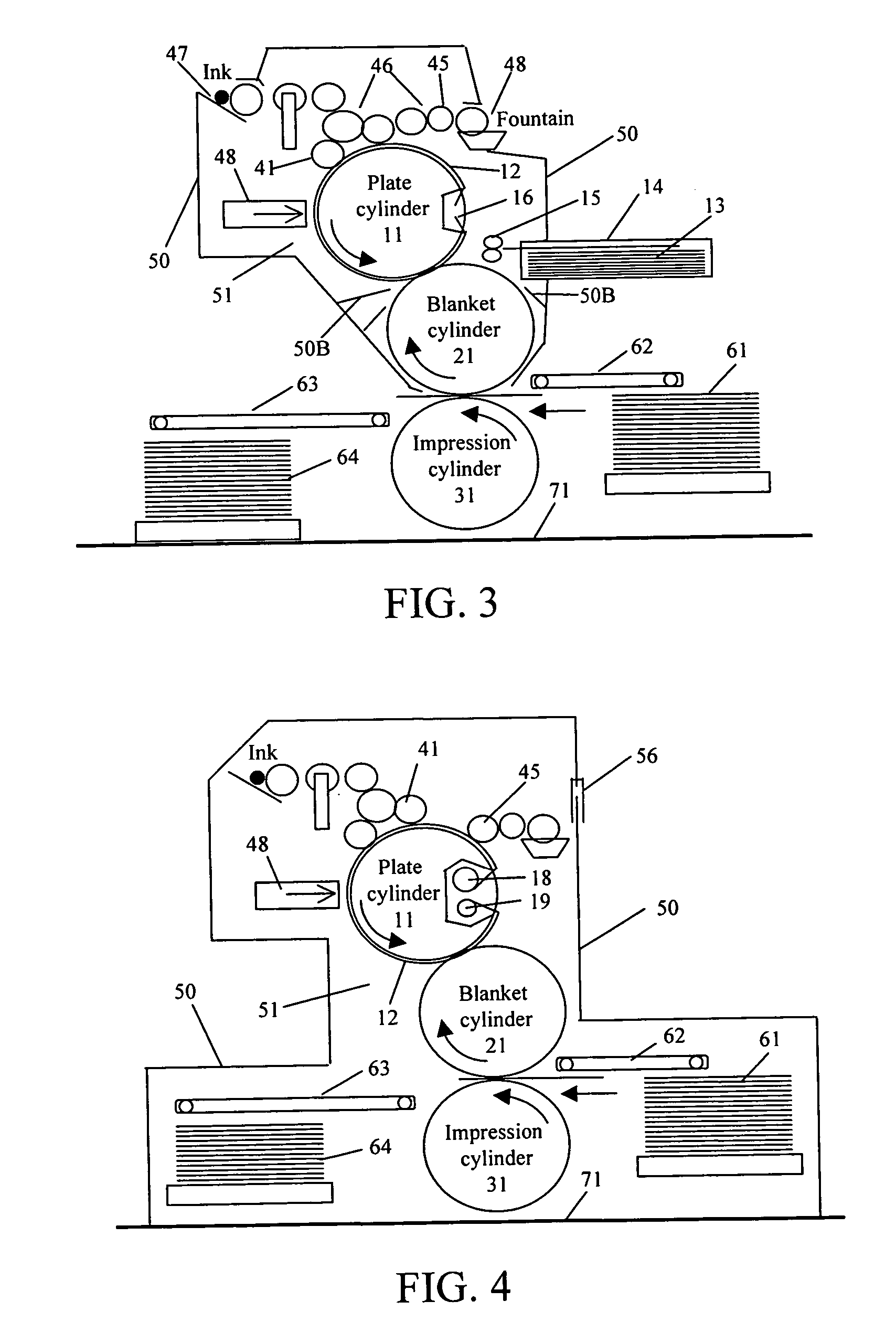Lithographic printing press and method for on-press imaging lithographic printing plate
- Summary
- Abstract
- Description
- Claims
- Application Information
AI Technical Summary
Benefits of technology
Problems solved by technology
Method used
Image
Examples
examples 1-5
[0092] This example demonstrates the importance of imaging and on-press developing a high-speed laser sensitive plate in the dark or under safe light.
[0093] An electrochemically roughened, anodized, and polyvinylphosphonic acid treated aluminum sheet was first coated with a 0.1% aqueous solution of polyvinyl alcohol (Celvol 540, from Celanese) with a #6 Meyer rod, followed by drying in an oven at 100° C. for 2 min. The polyvinyl alcohol coated substrate was further coated with the photosensitive layer formulation PS-1 with a #8 Meyer rod, followed by drying in an oven at 90° C. for 2 min.
PS-1WeightComponentratiosNeocryl B-728 (Polymer from Zeneca)3.193Sartomer SR-399 (Acrylic monomer from Sartomer)7.630Pluronic L43 (Nonionic surfactant from BASF)0.6492,2-Bis(2-chlorophenyl)-4,4′,5,5′-tetraphenyl-1,1′-biimidazole1.4072-Mercaptobenzoxazole0.8394,4′-Bis(diethylamino)benzophenone0.2812-Butanone86.000
[0094] The photosensitive layer coated plate was further coated with a water-soluble ...
examples 6-10
[0098] An electrochemically roughened, anodized, and silicate treated aluminum sheet was coated with thermosensitive layer formulation PS-2 using a #8 Meyer rod, followed by drying in an oven at 90° C. for 2 min.
PS-2ComponentWeight ratiosNeocryl B-728 (Polymer from Zeneca)2.73Sartomer SR-399 (Acrylic monomer from Sartomer)6.52Pluronic L43 (Nonionic surfactant from BASF)0.562,4-Bis(trichloromethyl)-6-[(4-1.00ethoxyethylenoxy)-phen-1-yl]-s-triazineADS-830AT (Infrared absorbing cyanine dye0.10from American Dye Source)Acetone90.0
[0099] The thermosensitive layer coated plate was further coated with a water-soluble overcoat OC-2 using a #6 Meyer rod, followed by drying in an oven at 100° C. for 2 min.
OC-2ComponentWeight ratiosAirvol 205 (Polyvinyl alcohol from Air Products)5.00Zonyl FSO (Perfluorinated surfactant from DuPont)0.02Water95.00
[0100] The plate was exposed with an infrared laser plate imager equipped with laser diodes emitting at about 830 nm (Trendsetter from Creo) at a do...
PUM
| Property | Measurement | Unit |
|---|---|---|
| Fraction | aaaaa | aaaaa |
| Fraction | aaaaa | aaaaa |
| Fraction | aaaaa | aaaaa |
Abstract
Description
Claims
Application Information
 Login to View More
Login to View More - R&D
- Intellectual Property
- Life Sciences
- Materials
- Tech Scout
- Unparalleled Data Quality
- Higher Quality Content
- 60% Fewer Hallucinations
Browse by: Latest US Patents, China's latest patents, Technical Efficacy Thesaurus, Application Domain, Technology Topic, Popular Technical Reports.
© 2025 PatSnap. All rights reserved.Legal|Privacy policy|Modern Slavery Act Transparency Statement|Sitemap|About US| Contact US: help@patsnap.com



